Forbes Field was the third baseball stadium built for the Pittsburgh Pirates. Opened in 1909, the ballpark also hosted the NFL team the Pittsburgh Steelers. The baseball stadium got its name after John Forbes, a Scottish general, who led the British expansion in Pennsylvania. Unlike wooden ballparks of that era, Forbes Field was the first NL and third MLB stadium made of steel and concrete. Its remnant memorials in Pittsburgh are a fascinating place of pilgrimage for ardent baseball lovers.

The History
Barney Dreyfuss, the Pirates’ owner, started planning a new baseball stadium for his team in 1903. Exposition Park, then the Pirates’ home, was small and the MLB franchise needed a bigger home. With a budget of $1 million, the construction began in January 1909 though the actual cost almost doubled. Dreyfuss wanted to build a new ballpark different from the other wooden ballparks, such as Polo Grounds, of that time. This is why he got the Forbes Field constructed using steel and concrete to ensure it lasted longer.

Forbes Field was opened on June 30, 1909, with a game against the Chicago Cubs. Fans arrived six hours early on the day of the first game, which began at 3:30 pm. The weather was clear on that day and the temperature was around 80°F. The crowd gathered at the stadium was massive at 30,338, compared to 23,000 seats.
The stadium started to age in its sixties. It was the second oldest park in its time after Shibe Park, located in Philadelphia. When selected, the location of the park was criticized for being not developed. But after it became a bustling business district due to the ballpark, fans struggled to find a parking place in the overcrowded surrounding. Many began to call it “a joyless exercise yard for prisoners.” Three Rivers Stadium replaced Forbes Field as the Pittsburg Pirates’ home in 1970.
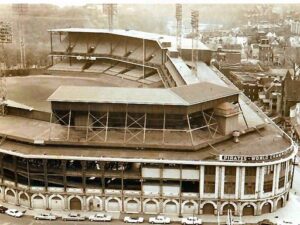
The End of An Era
The Pirates began planning a new ballpark to replace Forbes Field as early as 1948. However, financial issues hindered it until the late-1950s. The franchise sold the baseball stadium to the University of Pittsburgh for $2 million in 1958 though it continued to play there. Soon they got a new ballpark site and started the construction of Three Rivers Stadium in 1968.

After the last game on June 28, 1970, the Forbes Field home plate was dug and transferred to the Three Rivers Stadium using a helicopter. Many attempts were made to rescue the abandoned land of the Forbes Field from demolishing. There were proposals to build a farmers’ market, a stage, and other public areas but these did not materialize. The abandoned park was engulfed in fire twice in December 1970 and July 1971. This accelerated the demolition that began on July 28, 1971.
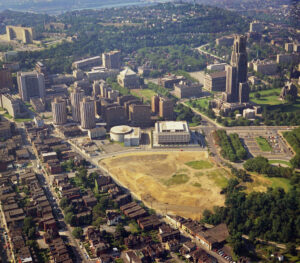
Forbes Field Monuments
- The Pirates moved the statue of Honus Wagner installed at Forbes Field in 1955 first to Three Rivers Stadium and then to PNC Park.
- The restored left-field wall has been at PNC Park since 2009. It hosted a sign reading “406 FT” to remember Bill Mazeroski’s home run that helped the Pirates win the 1960 World Series.

- The Posvar Hall of the Pittsburgh university showcases the Forbes Fields’ home plate for baseball fans.
- The remnants of the ballpark at its original location include a part of Mazeroski’s Wall, the left-center wall, the center-field wall, a flagpole, and a recreated gate with ticket counters.
Design and Features
Forbes Field’s grandstand was designed by Charles Wellford Leavitt Jr and constructed by Nicola Building Company in 122 days. It was the best stadium in the major league at that time and the first to have ramps and elevators. The Field had a huge playing surface. A batting cage was placed in the deepest area of the center field during the games. The seating system was altered often throughout the stadium’s timeline. During the overflow crowds, the fans were permitted to sit on the grass in the outfield. The scoreboard was operated with hands and the ballpark had rooms for umpires and a clubhouse.
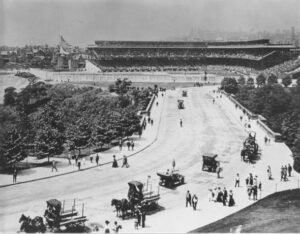
The stadium’s facade had “PAC” – Pittsburgh Athletic Company – written on it in “buff-colored terra cotta.” Green steelwork interspersed with red slates provided a contrasting aesthetic feature on the roof. Dreyfuss did not like the cheap home runs and vowed to never have that in his stadium. This is why the Pirates designed a huge playing field in Forbes Field. In 1925, to increase the seating capacity, the grandstand of the right field was extended into the corner and in the fair territory. It led to a decrease in the foul line distance. The stadium had a huge outfield space which made the triple and inside-the-park home runs very common. The backstop at the stadium was set at 110 feet right behind the home plate. It was quite large than the average 60 feet backstops at the other stadiums of the time.
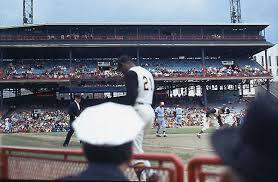
Initially, the stadium had a seating capacity of 25,000 people which was the largest in the league at that time. It was increased to 41,000 in 1925 but reduced to 35,000 in the 1950s. The Forbes Field was a pitcher-friendly ballpark and had natural grass grown in Crestline, Ohio.
Purely Baseball Things To Know
- Forbes Field hosted 4,700 baseball games.
- The Pirates won three of their five World Series titles and seven of nine NL Pennants at Forbes Field.
- It is called “the House of Thrills” in 1959 because of the dominant performance of its MLB and NFL home teams.
- There was a demand to name the ballpark after the Pirates’ chairman Dreyfuss twice. However, he and his wife resisted. So, a monument was placed right in front of the wall at the center field in honor of Dreyfuss.
- Forbes Field was the original home of the Homestead Grays, who played in the Negro League.
- The Pirates played the Chicago Cubs bot in the opening (June 30, 1909) and closing games (June 28, 1970) at Forbes Field.
- Often the ballpark was so much overcrowded that fans have to sit on the grass.
- It had the largest playing surface among major league stadiums.
- On October 13, 1960, Bill Mazeroski hit a home run that enables the Pirates to win the seventh game 10-9 and also the World Series against the New York Yankees.
- Every year fans come together to remember “Bill Mazeroski’s World Series-winning home run” at Forbes Field remnants in the Pittsburgh university campus.
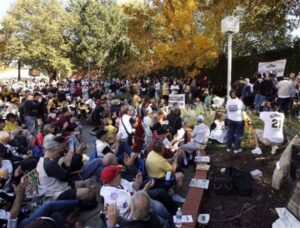
- The opening-day ceremony was the largest ever for baseball fans until then with a 30,338 standing-only crowd.
- Johnny Evers, the first to bat at Forbes Field, was hit by a pitch.
- George Gibson, the first of the Pirates to bat at Forbes Field, went to manage the Pirates twice from 1920 to 1922 and 1930 to 1932.
- The outfield was deliberately made larger to reduce home runs. However, this increased the number of doubles and triples.
- The game on May 30, 1925, witnessed the home team hitting eight triples.
- Though the ballpark overwhelmingly favored pitchers, no one ever had a no-hitter at the ballpark.
- The capacity was increased from 25,000 in 1909 to 41,000 in 1925 before being reduced to 35,000 in the 1960s.
- A crowd of 44,932 attended the game on September 23, 1956, making it the largest ever in the ballpark. However, the Pirates’ game against the Brooklyn Dodgers was interrupted due to rain.
- The 1960 season recorded the highest attendance with 1,705,828 tickets sold.
- The credit of hitting the last home run at Forbes Field goes to Al Oliver of the Pirates. He did it in the last game against the Cubs.

- The last game saw 40,918 spectators.
- The Pirates won the 1909 World Series at the inaugural season at Forbes Field.
- It was the venue for the last MLB triple-header on October 2, 1920.
- The home team overcame a two-game deficit to win the 1925 World Series against the Washington Senators.
- Babe Ruth hit the longest home run at the ballpark on May 25, 1935. He hit three home runs on that day and these were the last three in his career.
- Forbes Field was the place for “the first-ever curtain call in baseball history.” Fans stood to cheer Dale Long of the Pirates for five minutes to celebrate his eighth consecutive home run on May 28, 1956.
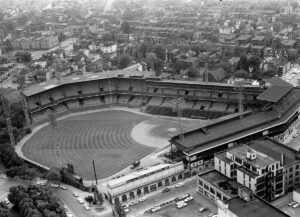
None-Baseball Events
Forbes Field was also home to the NFL’s Pittsburgh Steelers for 30 years until 1963. Before that, it hosted games of the Pittsburgh university football team. The baseball stadium was also home to NCAA’s Pittsburgh Panthers until 1924 and AFL’s Pittsburgh Americans for two seasons until 1937. The Pittsburgh Panthers enjoyed five undefeated seasons before they moved in 1924.
The baseball stadium hosted several boxing bouts until 1960. The most prominent among them was the 1951 heavyweight boxing championship. In 1909, it was the venue for the culmination of the International Centennial Celebration and Conventions of the Disciples of Christ to celebrate 100 years of the American Restoration Movement. Forbes Field was also chosen for mining safety demonstrations, circuses, and concerts.


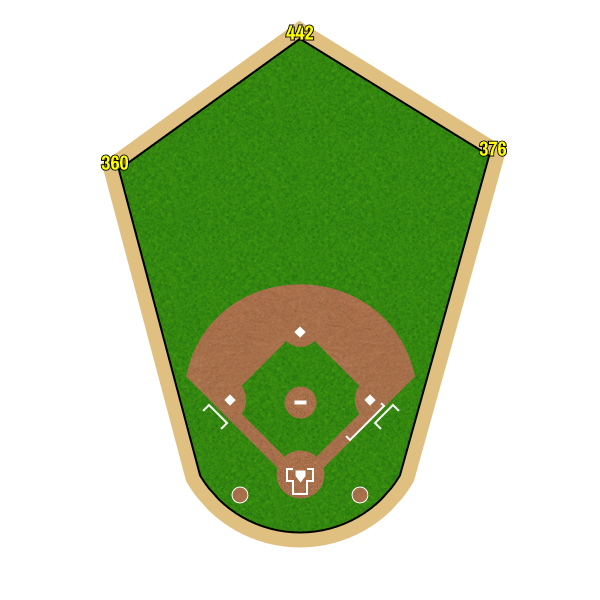

 Phipps Conservatory and Botanical Gardens
Phipps Conservatory and Botanical Gardens